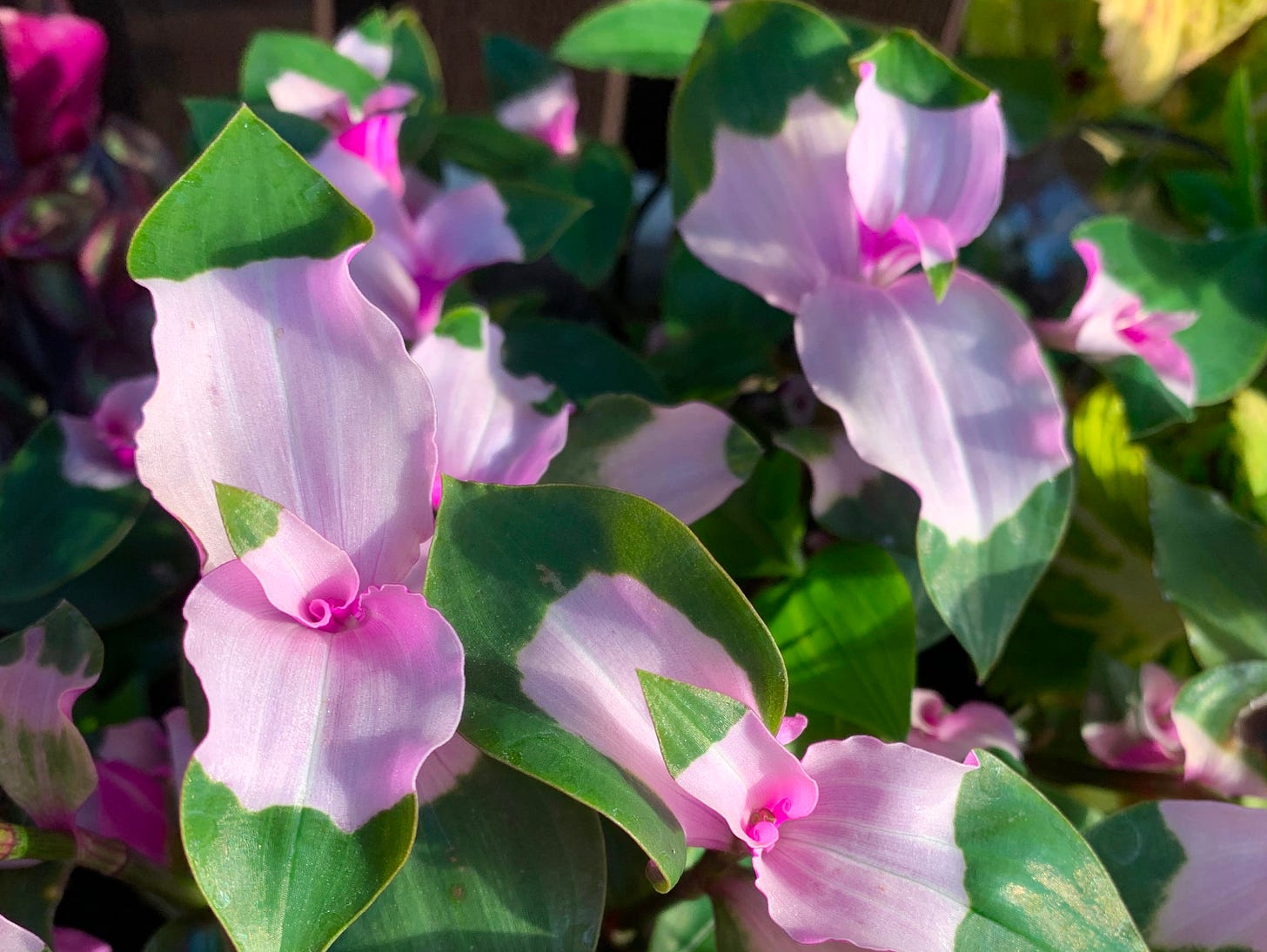Do You Have a Maiden's Blush, or Is It a Blushing Bride?
Maybe you haven’t heard of ‘Maiden’s blush’, but you have heard of a plant called the ‘Blushing Bride?’ Despite it often being called ‘Blushing Bride,’ its actual name is Tradescantia ‘Maiden’s Blush.’
Today I wanted to talk about how it got its name and how it get its stunning pink variegation, so let’s have a look!
Why It’s Maiden’s Blush and Not Blushing Bride
This cultivar has often been labeled under different names and species, such as Tradescantia ‘Blushing Bride’ or Tradescantia Fluminensis ‘Maiden’s Blush.’
But, these names are not actually correct. Tradescantia ‘Blushing Bride’ actually refers to an entirely different plant. This older cultivar, belonging to the Andersoniana Group, is a frost-hardy perennial with long, grass-like leaves and is not the same as this variegated houseplant.
The first documented name for this plant is ‘Maiden’s Blush.’ It was first mentioned in a publication in 1992, but it wasn’t officially established until 2007. There’s a lot of confusion surrounding this plant’s species, and it is therefore treated as an unknown hybrid.
The Unique Variegation of Tradescantia ‘Maiden’s Blush’
The most interesting feature of Tradescantia Maiden’s Blush is its unique pattern of variegation. While many plants has some form of variegation, Maiden’s Blush truly stands out.
In warm conditions, the plant has a dark green leaves. But, unlike most other variegated plants that are influenced by light, the variegation of Maiden’s Blush is triggered by temperature.
In cooler temperatures, new growth appears with sharply-defined patches of pink, located either on the bottom half or the center of each leaf.
I’ve had my ‘Maiden’s Blush’ for a while, and even though I’ve kept it in the room with the lowest temperature during winter, I’ve never seen any variegation appear when it was indoors. However, last year I planted a couple of cuttings outdoors, and to my surprise, all the new growth was variegated!
Maiden’s Blush Care Tips
Caring for the ‘Maiden’s Blush’ is quite similar to managing other Tradescantia species. Here are some simple tips to keep your plant thriving:
Lighting: This plant prefers bright, indirect light. It can also handle more direct light, but need to get used to the light gradually.
Watering: Allow the soil to dry out between waterings. ‘Maiden’s Blush’ has quite thin leaves and stems, so even though it can handle drying out completely, it’s best not to let it go too long between waterings.
Soil: Use a well-draining potting mix. A good-quality indoor plant soil with some added perlite works great.
Fertilizing: ‘Maiden’s Blush’ doesn’t demand much fertilizer. If you repot regularly, additional fertilizing might not be necessary. If you aren’t repotting often, fertilize every other month using a diluted houseplant fertilizer.
Climate: This plant has a sensitivity to both high heat and frost. In warmer climates, it can happily live outdoors, while in colder regions, it’s best as a summer outdoor plant. Temperatures below 10°C (50°F) can damage the plant.
Although I’ve haven’t found much information on this, but it seems that ‘Maiden’s Blush’ may tolerate temperatures as low as 0°C (32°F) by dying back and regrowing with warmer weather!
I doubt it will do that the cold Swedish climate where I live, where temperatures often fall lower and remain there longer. But I will update you on whether it manages to bounce back this summer!
Until next week, happy planting!
Katja




